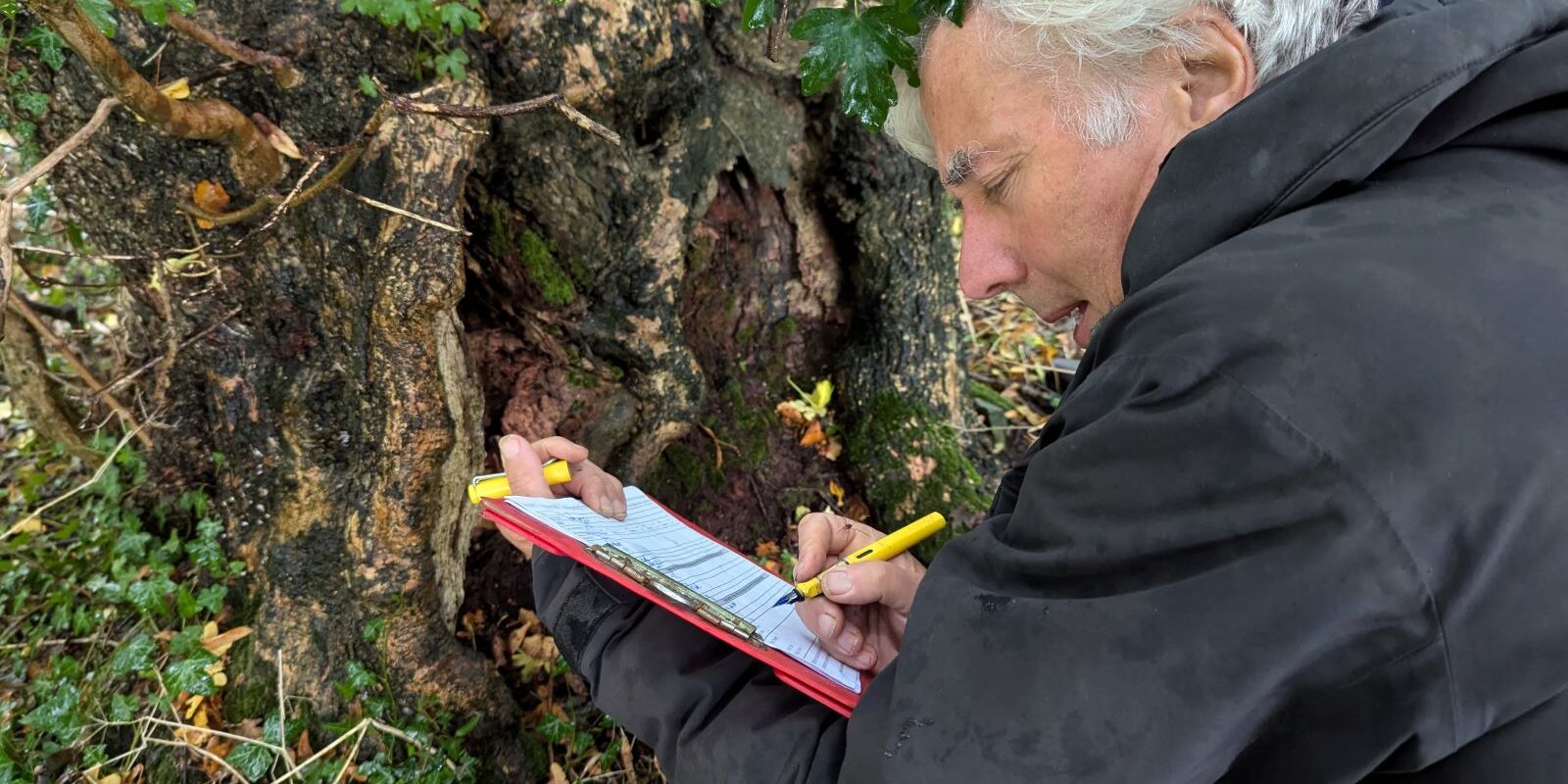Citizen Science – Ancient and Veteran Trees

15th October 2024
You can’t protect it if you don’t know it’s there!
Knowing the countryside is the first step to protecting it, and it’s local people who are best placed to do this. There are lots of citizen science projects you can get involved with, from measuring water quality in your local river, to monitoring pollinators in your garden. Another invaluable thing to look out for is any ancient or veteran trees, which can then be registered on the Woodland Trust Ancient Tree Inventory.
An ancient tree may have legal protection if it provides a home to another legally protected species. The Wildlife and Countryside Act and the Countryside and Rights of Way provide protection for all bats and their roosts, some birds, fungi, lichens and invertebrates, while important hedgerows are also protected under the Hedgerow Regulations.
Don’t be fooled by size
While most people will recognise a mature oak tree looming above, there are other trees which may not look quite so impressive but still hold great ecological value. On our recent members’ walk along Dornford Lane, Dr Julian Parfitt found a veteran field maple which might have been otherwise overlooked, and registered it on the inventory.
Even dead trees have value
Contrary to what you might think, it’s worth noting dead trees too. Unfortunately, some landowners have an overly tidy attitude, so things get taken out because they look untidy, but they actually provide incredibly valuable habitat. Some of the fungal species that live on dead trees can be quite rare, and there is a whole list of beetles which need rotting trees for their larval stage so it’s important to keep these things in place.
How to register an ancient or veteran tree
If you spot a tree which you think might qualify as an ancient or veteran tree, you will need:
- A method of recording the location of a tree (10 figure grid reference). This could be either on a mobile phone, GPS unit or a map.
- A camera
- A tape measure
Measure the girth of the tree 1.5m from the ground, keeping the measuring tape as level as possible, make a note of the grid reference and the condition of the tree, looking for things like holes in branches, dead and dying branches and any fungi or lichen. If you’re unsure of the species, don’t worry too much. Take some photos and upload them, along with the information you’ve gathered, to the Woodland Trust ATI.
More information at https://ati.woodlandtrust.org.uk
